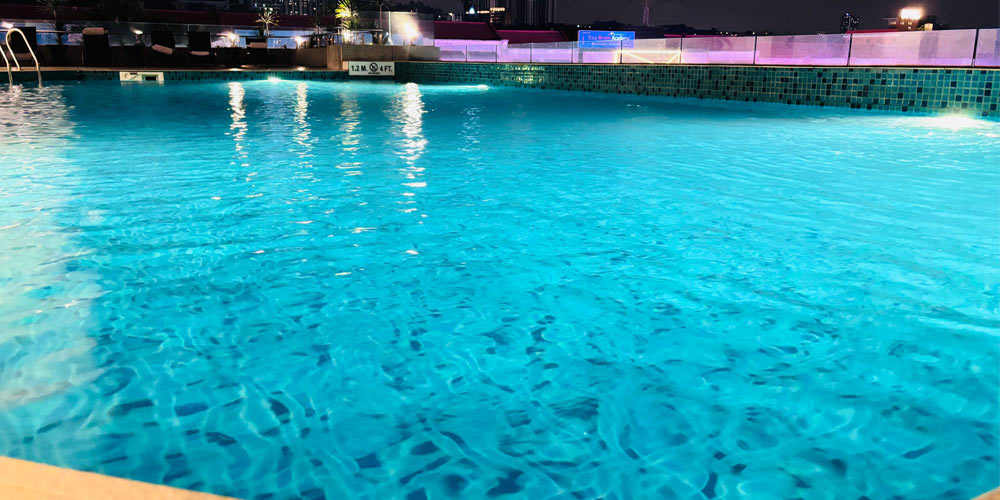אויב איר האָט אייער אייגענעם שווימבאד אין שטוב אָדער איר זענט גרייט צו ווערן אַ שווימבאד אויפהאלטער. דאַן מזל טוב, איר וועט האָבן אַ סך שפּאַס אין שווימבאד אויפהאלטונג. איידער דער שווימבאד ווערט גענומען אין באַנוץ, דאַרפט איר פֿאַרשטיין איין וואָרט, "בעקן כעמיקאַלן"."
די נוצן פון שווימבאד כעמיקאלן איז איינער פון די וויכטיגע אַספּעקטן פון שווימבאד וישאַלט. עס איז אויך דער מערסט קריטישער טייל פון פאַרוואַלטונג פון אַ שווימבאד. איר דאַרפֿן צו וויסן פארוואס די כעמיקאלן ווערן גענוצט.
געוויינטלעכע שווימבאד כעמיקאלן:
כלאָר דיסינפעקטאַנטן זענען געוויינטלעכע כעמיקאַלן אין שווימבאד וישאַלט. זיי ווערן גענוצט ווי דיסינפעקטאַנטן. נאָכדעם ווי זיי צעלאָזן זיך, פּראָדוצירן זיי היפּאָכלאָראָוס זויער, וואָס איז אַ זייער עפעקטיוו דיסינפעקטאַנט קאָמפּאָנענט. עס קען טייטן באַקטעריע, מיקראָאָרגאַניזמען און אַ געוויסן גראַד פון קאָנסיסטענט אַלדזשי וווּקס אין די וואַסער. געוויינטלעכע כלאָר דיסינפעקטאַנטן זענען סאָדיום דיטשלאָראָיסאָסיאַנוראַטע, טריטשלאָראָיסאָסיאַנוריק זויער, קאַלסיום היפּאָכלאָריט, און בליטש (סאָדיום היפּאָכלאָריט לייזונג).
בראָם
בראָמין דיסינפעקטאַנטן זענען זייער זעלטענע דיסינפעקטאַנטן. די מערסטע געוויינטלעכע איז BCDMH(?) אדער סאָדיום בראָמיד (גענוצט מיט כלאָר). אָבער, קאַמפּערד מיט כלאָר, זענען בראָמין דיסינפעקטאַנטן טייערער, און עס זענען מער שווימער וואָס זענען סענסיטיוו צו בראָמין.
דער pH איז א זייער וויכטיגער פאראמעטער אין בעקן אויפהאלטונג. דער pH ווערט גענוצט צו דעפינירן ווי זויער אדער אלקאלי די וואסער איז. נארמאל איז אין די ראנגע פון 7.2-7.8. ווען דער pH איז העכער ווי נארמאל, קען עס האבן פארשידענע גראדן פון איינפלוס אויף די עפעקטיווקייט פון דעזינפעקציע, עקוויפמענט און בעקן וואסער. ווען דער pH איז הויך, דארפט איר נוצן pH מינוס צו נידעריגער מאכן דעם pH. ווען דער pH איז נידעריג, דארפט איר אויסקלויבן pH פלוס צו הייבן דעם pH צום נארמאלן ראנגע.
קאַלסיום כאַרדנאַס אַדזשאַסטער
דאָס איז אַ מאָס פֿון דער קאַלסיום־מאָס אין בעקן־וואַסער. ווען דער קאַלסיום־ניוואָ איז צו הויך, ווערט דאָס בעקן־וואַסער נישט־סטאַביל, וואָס מאַכט דאָס וואַסער טרויב און קאַלקירט. ווען דער קאַלסיום־ניוואָ איז צו נידעריק, וועט דאָס בעקן־וואַסער "עסן" דאָס קאַלסיום אויף דער ייבערפֿלאַך פֿונעם בעקן, און דאָס וועט שאַטן מעטאַלענע פֿיטינגען און פֿאַראורזאַכן פֿלעקן. ניצטקאַלסיום קלאָרידצו פארגרעסערן די קאלציום הארטקייט. אויב די CH איז צו הויך, ניצט א ענטסקאַלקינג אגענט צו באזייטיגן די סקאַלע.
גאַנץ אַלקאַליניטי אַדזשאַסטער
גאַנץ אַלקאַליניטי באַציט זיך צו דער סומע פון קאַרבאָנאַטן און הידראָקסיידן אין בעקן וואַסער. זיי העלפֿן קאָנטראָלירן און סטרויערן די pH פון בעקן. נידעריק אַלקאַליניטי קען פאַרשאַפן pH דריפט און מאַכן עס שווער צו סטאַביליזירן אין די ידעאַל קייט.
ווען די גאַנצע אַלקאַליניטי איז צו נידעריק, קען מען נוצן נאַטריום ביקאַרבאָנאַט; ווען די גאַנצע אַלקאַליניטי איז צו הויך, קען מען נוצן נאַטריום ביסולפֿאַט אָדער הידראָטשלאָריק זויער פֿאַר נויטראַליזאַציע. אָבער, דער עפֿעקטיווסטער וועג צו רעדוצירן די גאַנצע אַלקאַליניטי איז צו טוישן אַ טייל פֿון וואַסער; אָדער צולייגן זויער צו קאָנטראָלירן דעם pH פֿון דעם בעקן וואַסער אונטער 7.0 און בלאָזן לופֿט אין בעקן מיט אַ בלאָזער צו באַזייַטיקן קאַרבאָן דייאַקסייד ביז די גאַנצע אַלקאַליניטי פֿאַלט צו דעם געוואונטשענעם לעוועל.
די אידעאלע גאַנצע אַלקאַליניטי קייט איז 80-100 מג/ל (פֿאַר שווימבאָדן וואָס נוצן CHC) אָדער 100-120 מג/ל (פֿאַר שווימבאָדן וואָס נוצן סטאַביליזירט קלאָר אָדער BCDMH), און ביז 150 מג/ל איז ערלויבט פֿאַר פּלאַסטיק לייַנער שווימבאָדן.
פלאָקולאַנץ
פלאָקולאַנטן זענען אויך אַ וויכטיקער כעמישער רעאַגענט אין בעקן וישאַלט. טרובע בעקן וואַסער ניט בלויז אַפעקטירט די אויסזען און געפיל פון די בעקן, אָבער אויך ראַדוסאַז די דיסינפעקציע ווירקונג. די הויפּט מקור פון טרובעקייט איז סוספּענדעד פּאַרטיקאַלז אין די בעקן, וואָס קענען זיין אַוועקגענומען דורך פלאָקולאַנטן. די מערסט פּראָסט פלאָקולאַנט איז אַלומינום סולפֿאַט, מאל PAC איז אויך געניצט, און פון קורס אַ ביסל מענטשן נוצן PDADMAC און בעקן געל.
די אויבנדערמאנטע זענען די מערסטע פארשפרייטעשווימבאד כעמיקאלןפֿאַר ספּעציפֿישע אויסוואַל און באַניץ, ביטע קלייבט לויט אייערע איצטיקע באַדערפֿנישן. און פֿאָלגט שטרענג די אינסטרוקציעס פֿון די כעמיקאַלן. ביטע נעמט פּערזענלעכע שוץ־מיטלען ווען איר ניצט כעמיקאַלן.
פֿאַר מער אינפֿאָרמאַציע וועגן שווימבאד וישאַלט, ביטע גיט דאָ.שווימבאד אויפהאלטונג"
פּאָסט צייט: 13טן אויגוסט 2024


